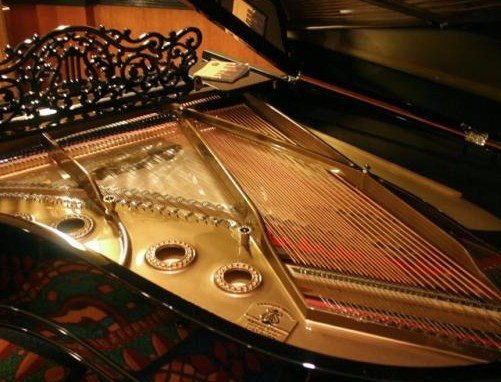









Here's a simple way to check your grand piano to see if it would benefit from having a string cover (apart from the obvious signs of dirt, dust, or debris on the sound board and around the tuning pins).
Lift up the damper on one of the lower bass strings. Ideally, as on a newer piano, the copper on the rest of the string should be just as shiny as the part under the damper. If it is not, the copper which is unprotected by the wool damper is slowly corroding due to the normal reaction with the air. A string cover placed properly in a new piano will prevent this discoloring. Even if the piano is not new and after the strings have begun to discolor, the string cover will help prevent further discoloring.
When I arrived at the home of one customer whose piano DOES have a string cover, I noticed that the cover had accidentally been pushed back so that the part of the strings forward of the dampers was uncovered. Even though the piano was in a house with an air conditioner, the uncovered copper strings were noticeably more discolored than the part which remained covered!
Occasionally (about one customer out of every 300) I will find a piano in a home that is benefiting from a "museum quality" air conditioning system - no dust or damaging humidity is in the air. In those rare cases I will concede that a string cover is not as necessary as in the other 99.3% of the cases. However, even in those situations, a string cover will still be useful in preventing things from falling or spilling into the piano - especially during parties or other times when a larger number of people are present.

Copyright 2010 by Wallace T. Scherer